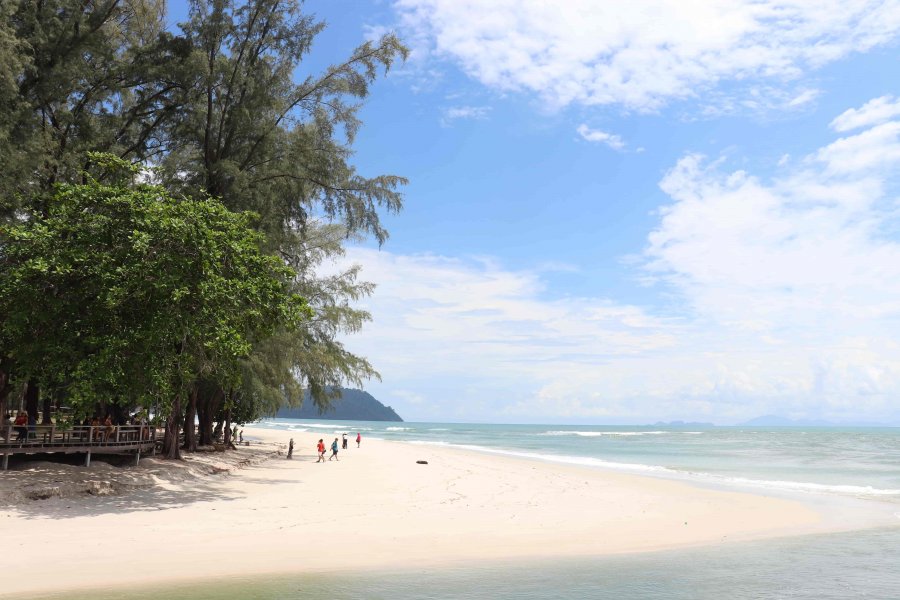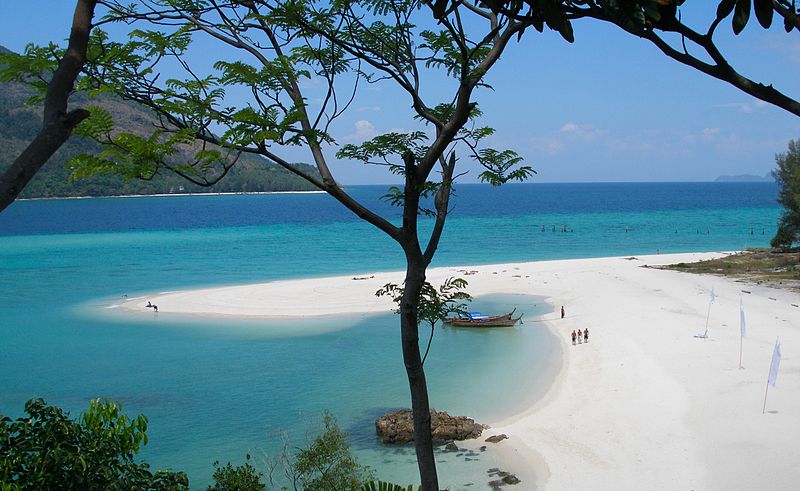Satun is your gateway to Thailand's deep south
Lounge on Koh Lipe's white sands and kayak through millennia-old caves in one of Thailand's most geologically diverse provinces.
Bordered by jutting limestone mountain ranges and the Andaman Sea, Satun is one of Thailand’s most geologically diverse provinces. Thanks to its Muslim majority, Satun has a rich and diverse culture, though has fortunately largely avoided the religious and political unrest of neighboring states.
Located on the Malay Peninsula, it tends to fall off the regular tourist trail due to its perceived inaccessibility, though in fact it is just over an hour’s drive from Hat Yai International Airport. The plus side to Satun’s relative obscurity is that it remains largely unscathed by tourist droves and is ripe with adventure.
Satun is a haven for active vacationers, from exploring Satun Geopark, which gained UNESCO certification in 2018 for its geology, ecosystem and cultural diversity, to diving off the many islands dotted alongside the mainland.
Start with a kayaking trip through the heart of a limestone mountain at Tham Le Stegodon (Thung Wa, 065-075-5945), a sea cave named for the 180-million-year-old Stegodon elephant fossil that was discovered there in 2008. The fossil is now on display at the nearby Satun Geopark Museum, alongside 450-million-year-old nautiloid (ancient squid) fossils, which are regarded as proof that the area was once all under ocean. Visit the cave during rainy season to see mini waterfalls throughout its four-kilometer-long route or in dry season to see the limestone rocks shimmering like glitter. A two-hour tour through the cave and the adjoining mangrove forest costs B300 per person—advance booking is necessary (084-858-5100).

Once you’ve found your sea legs, take a boat trip to Prasat Hin Pun Yod. Located on Koh Khao Yai, this fortress-like limestone sinkhole can only be reached by kayaking through small rock archways. Once inside, you can marvel at the thousands of unique rock peak formations that surround it and, if the tide’s right, you might find a secluded beach inside.

Come sunset, take a golden hour walk along the coastal Time Traveller’s Bridge. Hugging Khao To Ngai Fault Plane in Mu Ko Phetra National Park, it is named for its colorful quartz, limestone and red sandstone rock formations that date back between 444 and 545 million years.

Though Satun’s mainland beaches may not be plucked from a travel brochure, the province’s many beautiful islands more than make up for it. Koh Tarutao is one of the 51 islands established as part of Tarutao National Marine Park in the ‘70s. Now known for its nature trails, streams and diving, the island’s colorful history is charted in its compact museum.

Tarutao was established a penal colony for political prisoners in the late 1930s, though a lack of supplies following World War II led inmates and officers to band together in savage pirate gangs, ransacking ships that were passing through to Penang and the Malacca Straits. Their reign of terror lasted three years before it was quashed in 1948 by British controlled Malaya and the Thai government, with the prison disbanded soon after.
Most famous of the islands is the neighboring Koh Lipe with its azure waters, protected coral reefs, powdery white sands and chao leh (sea gypsy) population. In the lead up to the Anglo-Siamese Treaty of 1909, the previously uninhabited island was gifted to the chao leh, who were all then given the surname Hantale (“bravery at sea”)—an act that is said to have strategically secured Lipe as part of Siam, rather than it being relinquished to British-controlled Malaya.

Couples can take a day trip to the tiny Koh Khai to pass through its iconic rock archway—an act that is said to result in marriage. The island is named for the eggs that turtles lay on its pristine sands each year. You can also take a direct ferry service to Langkawi, Malaysia, departing from both Koh Lipe and Tammalang Pier in Satun (from B300 per person one-way).

With no shortage of spicy gaeng som and unusual sea grape dishes that are seldom found in Bangkok, you can’t visit Satun without indulging in a healthy dose of fresh seafood. For a feast with views overlooking Pak Bara Beach, grab a table at Rimle Kitchen (Pak Nam, La-ngu, 083-195-7844).

For something sweeter, green fingers can stop by Chim Melon Farm (79/416, Thung Wa Rd., 081-839-8022) to discover the secrets of hydroponics while sipping on melon coffee, or even melon wine.

For beautiful batik sarongs and clothing that forgo the typical flowers and seahorses in favor of Satun-referencing nautiloids and trilobites (ancient ancestors of the horseshoe crab), head to Panya Batik (La-Ngu, 081-093-4222). Here, you can also try your hand at tie-dye using natural colors—red from the iron in the limestone, brown from mangrove tree bark, yellow from the local mud.

Located right next to the Time Traveler’s Bridge, Royal Hill Satun Hotel (092-746-7999) is well positioned for exploring Satun’s coastal area, with clean and simple rooms priced at around B1,800/night. If you’re headed to Koh Lipe, you can get a beach hut at Wapi Resort (089-464-5854) for B2,000/night or a double room at the four-star Akira Lipe Resort (091-301-3010) from B5,100.
In February each year, Satun International Kite Festival sees over 100 kiting teams compete in categories of creativity, beauty, size and height. Alternatively, visit Koh Lipe during the full moon in late May or early June and late October or early November for a glimpse of the traditional Loy Rua festival, where chao leh locals send an elaborately painted boat out to sea, loaded with offerings, hair and nail clippings. The ritual aims to rid them of bad fortune and festivities last for three days. The lunar Chinese Vegetarian Festival usually falls in October each year, and brings with it fire-walking ceremonies and dragon parades. Chak Phra Festival also occurs in October and sees extravagant floats containing Buddha images paraded through the streets.
Advertisement